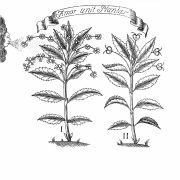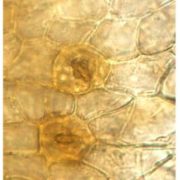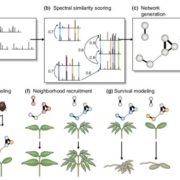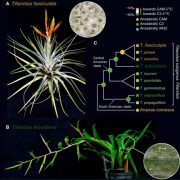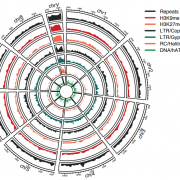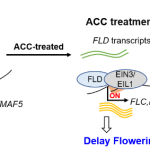Pigment-regulating small siRNAs from YUP locus are responsible for speciation of monkeyflowers
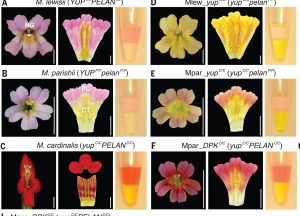 It has always been of interest to the plant community to understand the mechanisms behind the evolution of diverse floral carotenoid pigmentation within a genus. In this paper, Liang et al. investigated the mechanism behind monkeyflowers (Mimulus spp.) speciation driven by the flower color locus, YELLOW UPPER (YUP). YUP has been shown to control the presence or absence of yellow pigments in the petal, which subsequently affects pollinator choice and consequent reproductive speciation between closely related Mimulus species. RNA-seq data revealed a transcript with inverted repeats in the YUP locus which produced siRNAs in a phased pattern. The siRNAs were shown to concentrate in the petals and target the REDUCED CAROTENOID PIGMENTATION2 (RCP2) locus responsible for pigment accumulation in Mimulus. This extensive paper wrapped up with comparative genomics to understand the origin of YUP. Liang et al. presented another great example of the importance of noncoding genes and their role in flower speciation and evolution. (Summary by Apple Chew @_applechew) Science 10.1126/science.adg2774.
It has always been of interest to the plant community to understand the mechanisms behind the evolution of diverse floral carotenoid pigmentation within a genus. In this paper, Liang et al. investigated the mechanism behind monkeyflowers (Mimulus spp.) speciation driven by the flower color locus, YELLOW UPPER (YUP). YUP has been shown to control the presence or absence of yellow pigments in the petal, which subsequently affects pollinator choice and consequent reproductive speciation between closely related Mimulus species. RNA-seq data revealed a transcript with inverted repeats in the YUP locus which produced siRNAs in a phased pattern. The siRNAs were shown to concentrate in the petals and target the REDUCED CAROTENOID PIGMENTATION2 (RCP2) locus responsible for pigment accumulation in Mimulus. This extensive paper wrapped up with comparative genomics to understand the origin of YUP. Liang et al. presented another great example of the importance of noncoding genes and their role in flower speciation and evolution. (Summary by Apple Chew @_applechew) Science 10.1126/science.adg2774.


